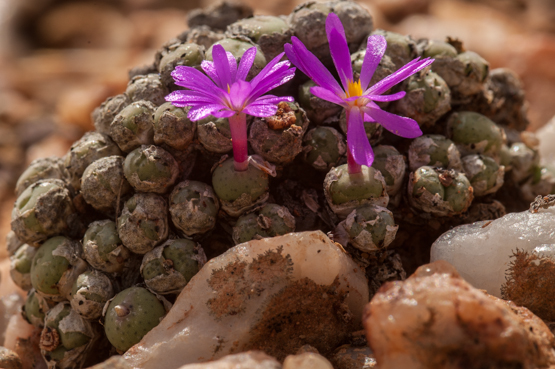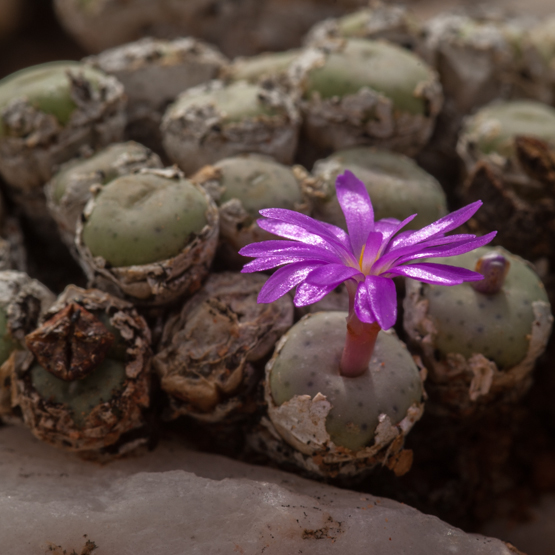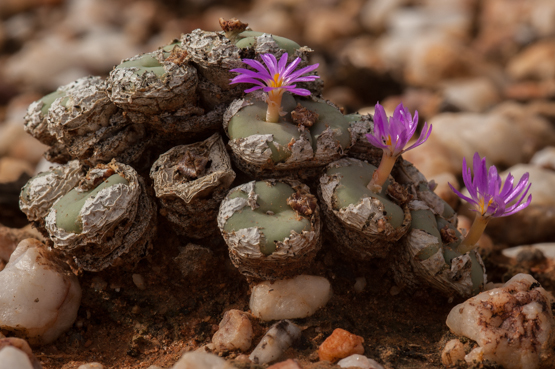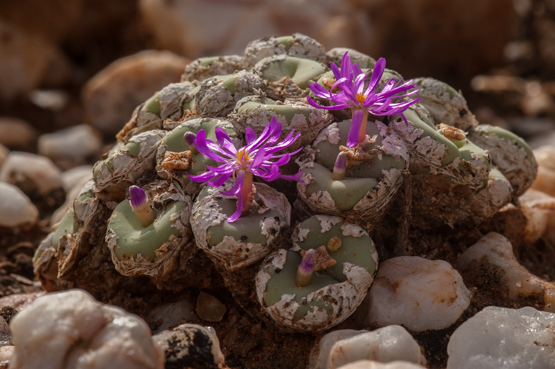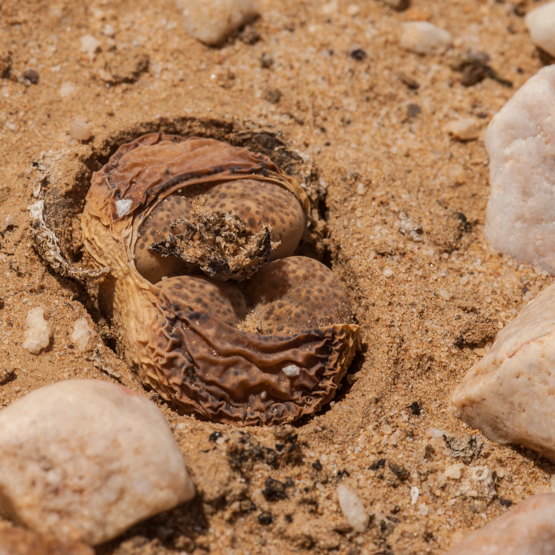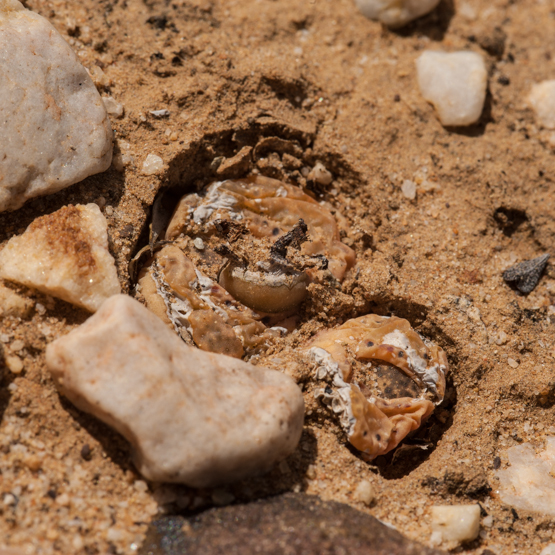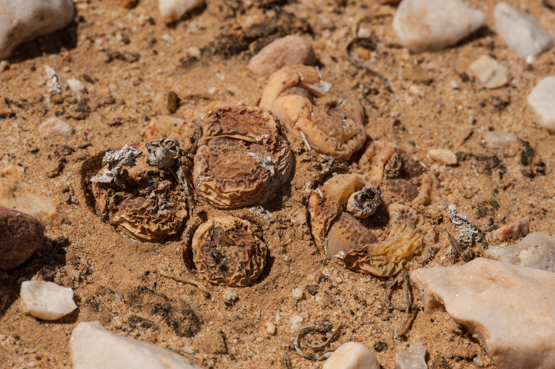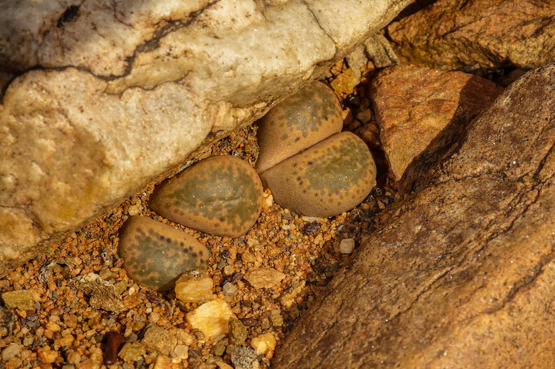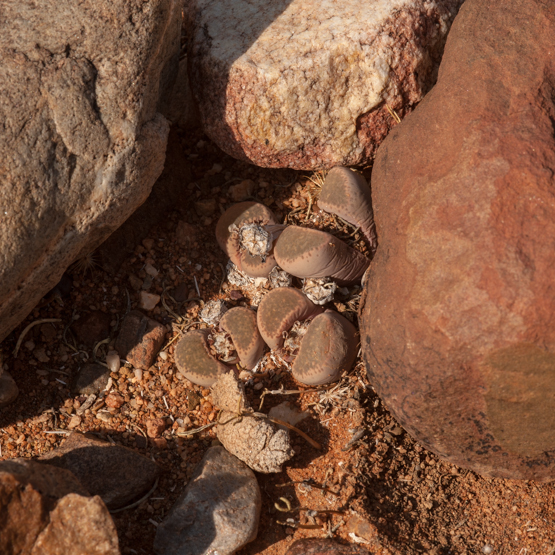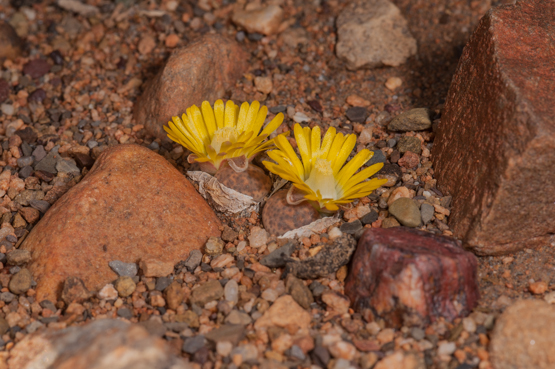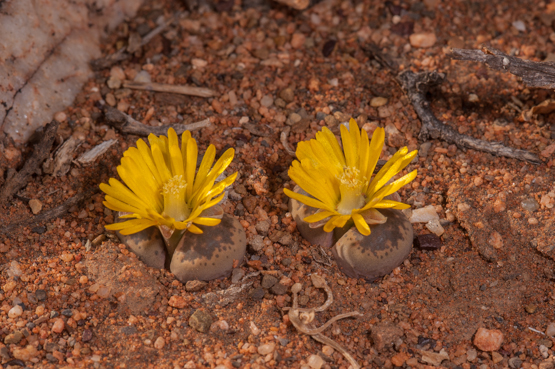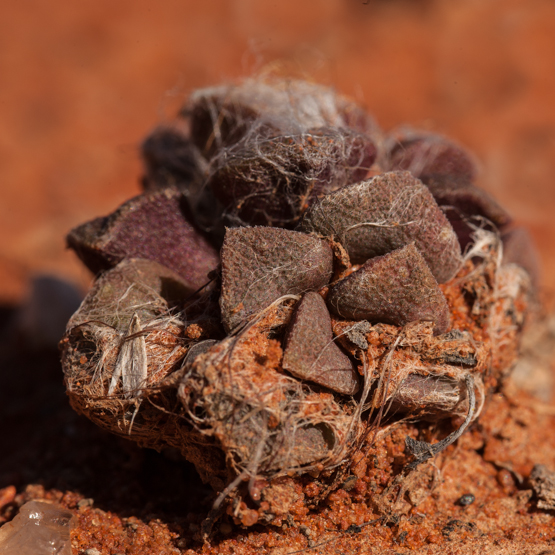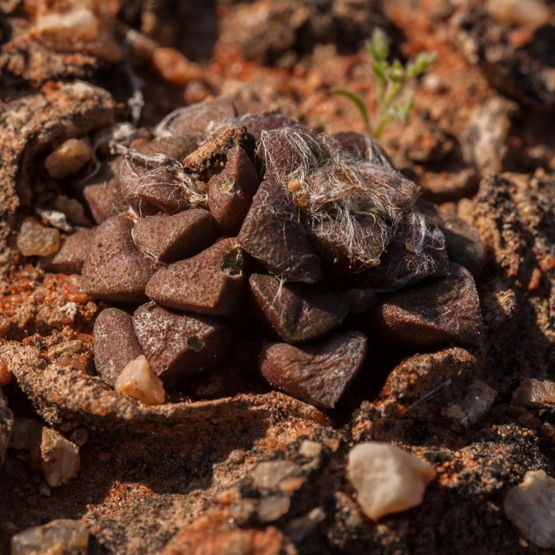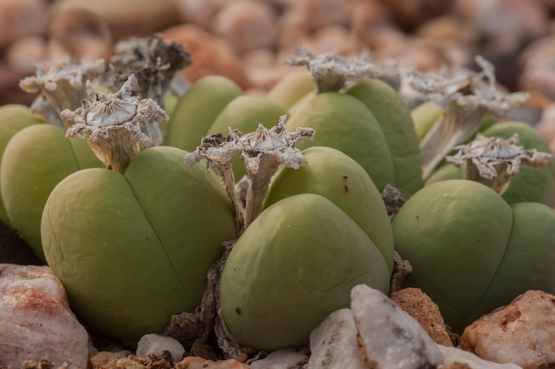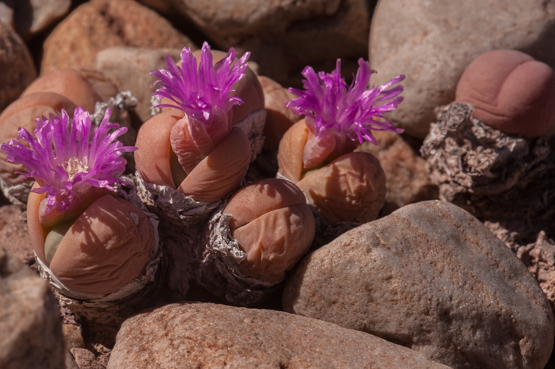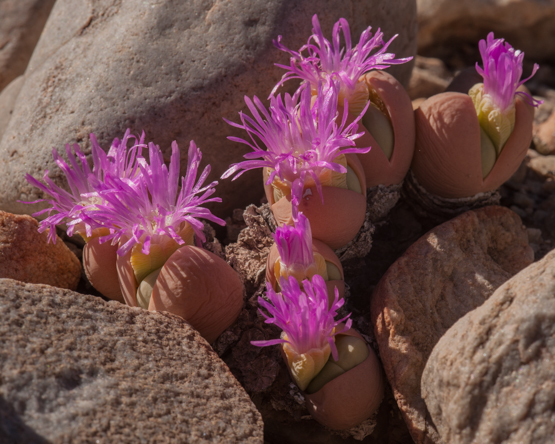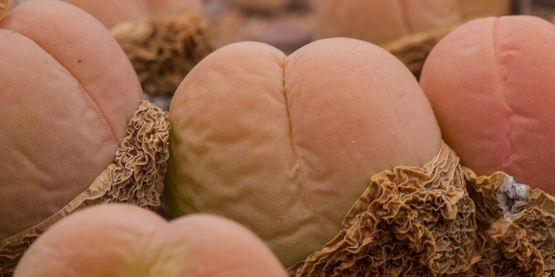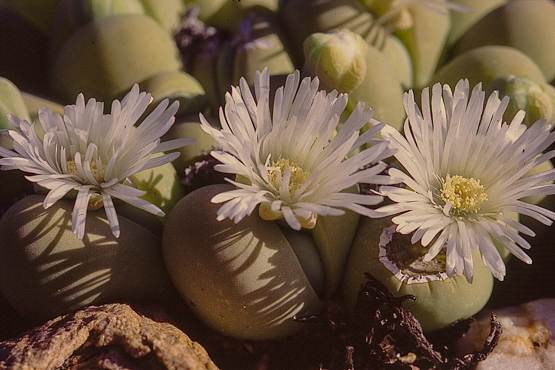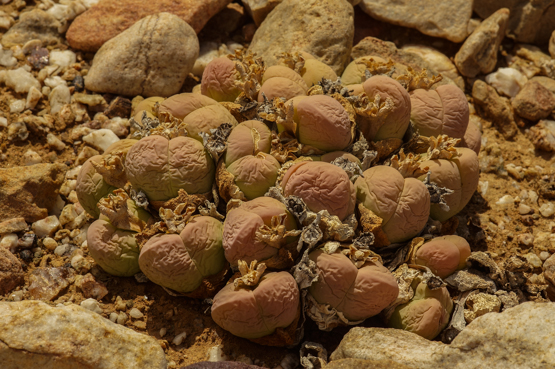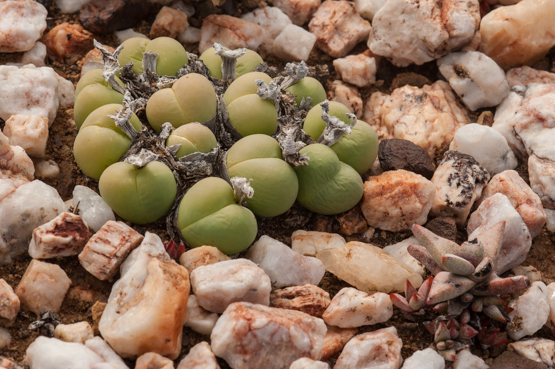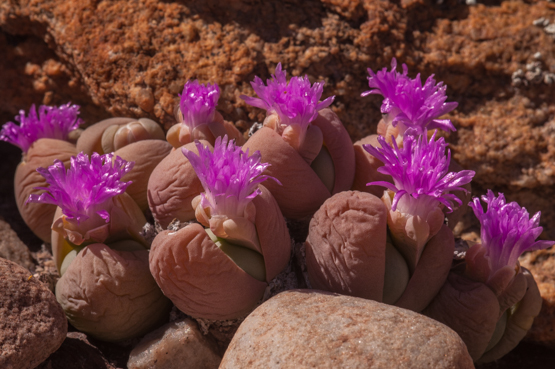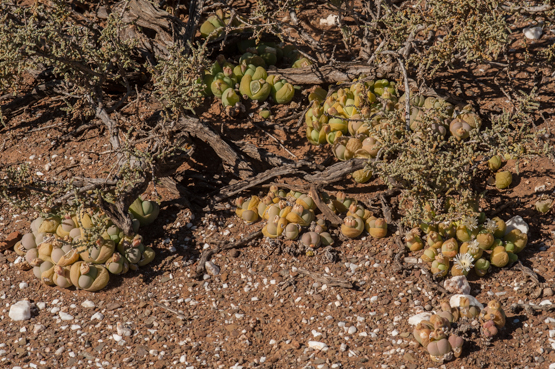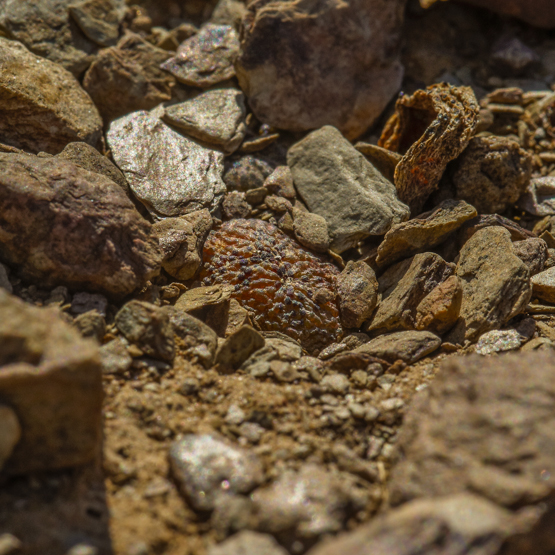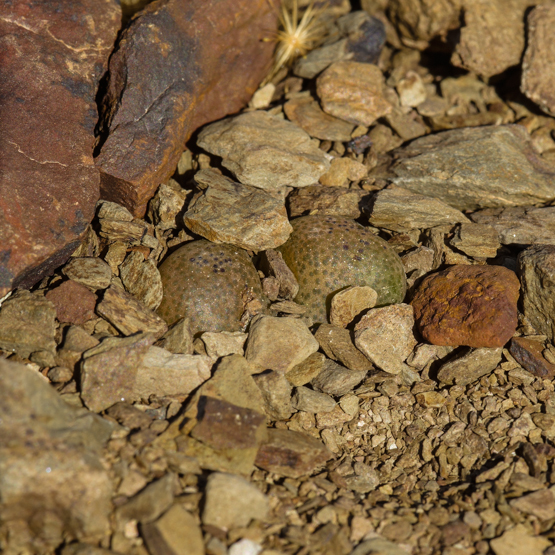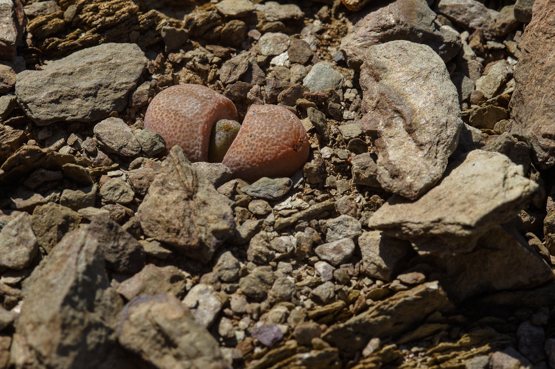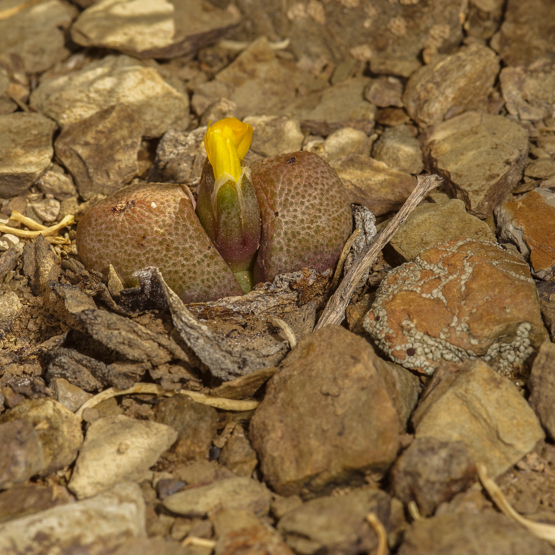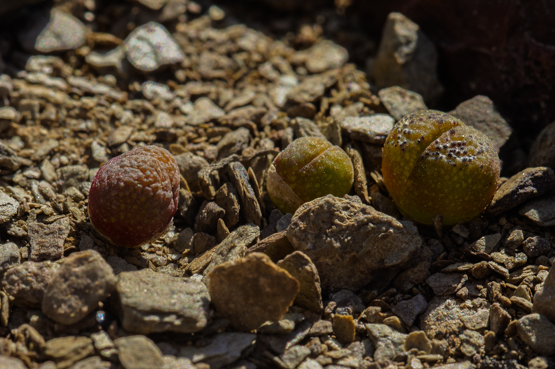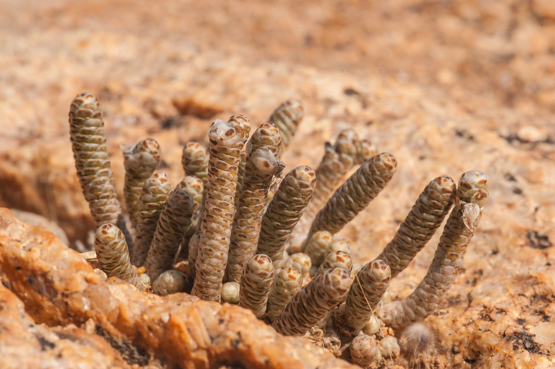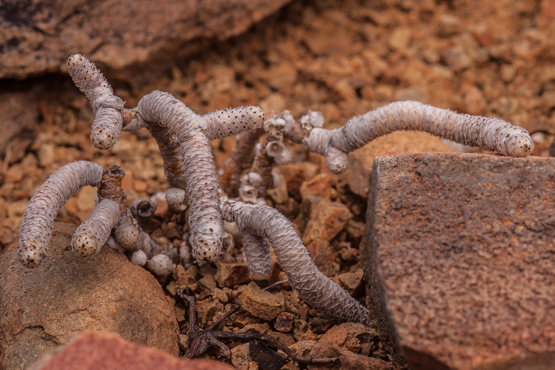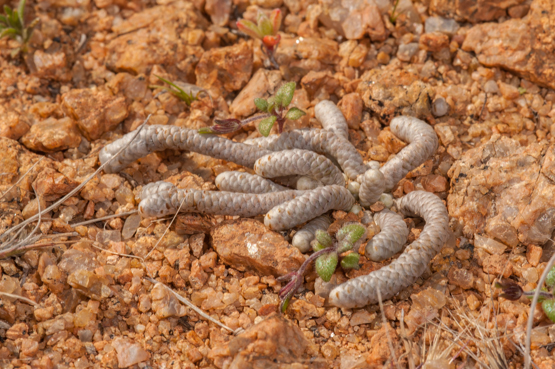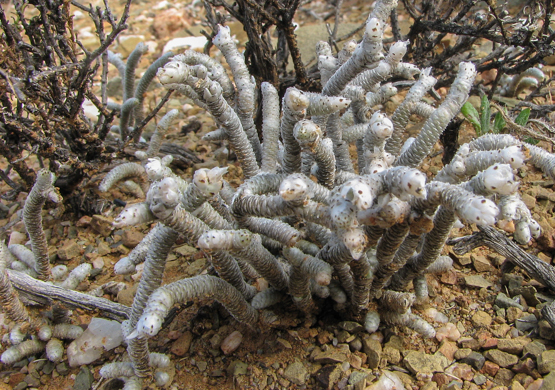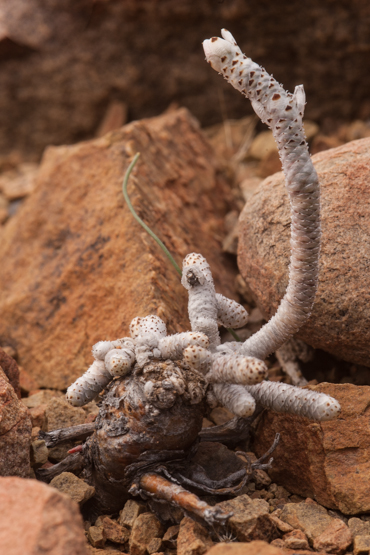Tag: miniatures
Conophytum minutum v. minutum (1)
Plants of this variety occur widespread from Papendorp and Vanrhynsdorp in the south to Garies and Gamoep in the north and are also found at the coast, near the mouth of the Groenrivier. They grow on a variety of substrates, either in the open on in the shade of shrubby mesembs.
The flowers appear in autumn and range in colour from pale pink to reddish magenta and even (rarely) white.
All photos made on the same day (30 March 2012).
Lithops localis (2)
Lithops localis (1)
This is the Lithops species with the most southerly distribution area of the whole genus, in the lower Great Karoo from Laingsburg to Steytlerville. It is easily recognized because of the very dense pattern of miniature windows. Mature plants usually have 2-5 bodies, but may occasionally have more than twenty. They flower in April and May.
The naming of the species is a very confusing issue; suffice it to say here that the name L. terricolor is also in use.
All pictures below were taken on the Witteberge plateau south of Laingsburg, very near to the type locality.
No 1: 4 Sept. 2011; no 2: 29 July 2010; nos 3, 4: 21 April 2012
Anacampseros retusa
Gibbaeum heathii (2)
Gibbaeum heathii (1)
This species is one of the most widely distributed in the genus (from north of Laingsburg to the Calitzdorp area) and seems to feel at home especially in quartz outcrops.
It is also one of the most variable ones. In some populations the plants form clumps 15-30 cm across, in others the clumps are small, with only a few bodies. The bodies may vary from about 8 mm to 6 cm in diameter and from a few millimeters to about 6 cm in height.
According to Nel’s The Gibbaeum Handbook, the colours run from: “uniformly whitish, white greyish, metal grey to pale glaucous green, green, sometimes tinted yellowish, purplish or sometimes quite reddish (this latter colour probably indication that clump is shrivelling off)”.
The flowers can be 10 to 30 mm across and are white, pink or purple.
All pictures in this post were taken in 2009
The first picture on 8 Febr.
The second one on 31 May
Nos. three and four on 9 Oct.
More pictures to come.
Tanquana hilmarii 2
Tanquana hilmarii (1)
These little gems occur on shale banks and slopes, where they are usually hard to detect. It is a harsh and arid habitat, which at first looks totally uninteresting. When you look carefully, you will however find out that these bare spots often harbour some astonishing miniature succulents like Conophytum joubertii, Gibbaeum nebrownii, G. dispar (see post 30 Jan. this year) and this Tanquana. The scarce rainfall here is often supplemented by early morning dew seeping into the fissures between the shale layers and providing just enough water for these dwarf plants. It is a hard life, especially for young seedlings (see first picture), but the advantage of a habitat like this is that there is no competition from bigger, faster growing -and more demanding- plants.
The pictures were taken near the eastern entrance to the Anysberg Nature Reserve (the first one on 21 April 2012, the other two on 27 Sept. 2010).
More pics to come.
Avonia albissima
Even if the name implies otherwise, this is far from the whitest Avonia, as many plants of this species look brownish, rather than bright white (see first picture).
Whatever the colouration, it is a nice little plant which does not get taller than about 4 cm. Sometimes a little caudex is visible (see bottom picture)
The species occurs in Namibia and northwestern South Africa.

